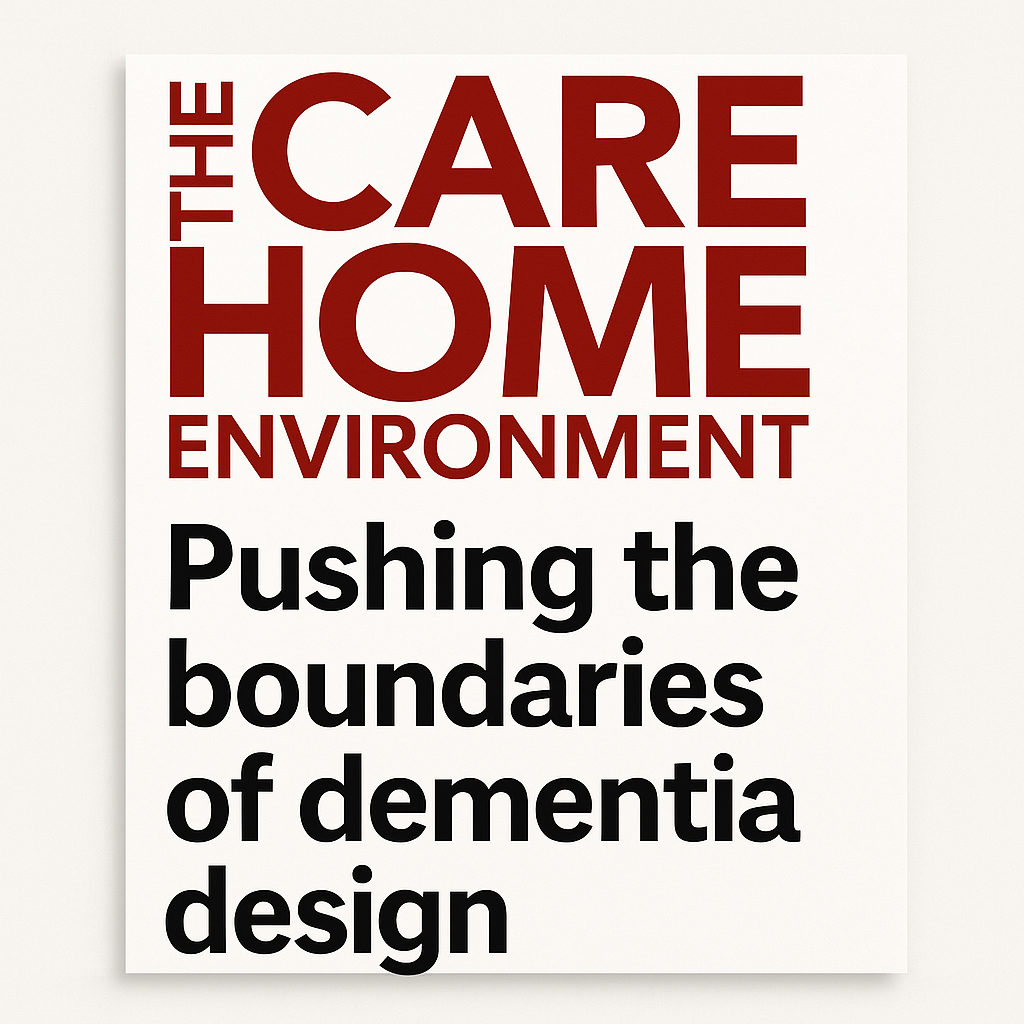Redefining Dementia Care through Thoughtful Design
Barley Manor Care Home by Porthaven Care Homes; Redefining Dementia Care through Thoughtful Design.
In the fast-moving world of interior design, where trends come and go, designing for dementia care demands a different approach—one rooted in longevity, familiarity, and function over fashion. For individuals living with dementia, a home should feel recognisable, reassuring, and consistent, not dictated by the latest colour of the year or fleeting design fads.
Unlike mainstream interior design, where change is often embraced, consistency is key in dementia-friendly environments. Familiarity helps maintain independence, reduces anxiety, and supports recognition. When people with dementia experience shifts in their cognitive abilities, they increasingly rely on their surroundings to help them make sense of the world. Disruptive changes in décor, layout, or colour schemes can cause distress and confusion, making it harder for individuals to navigate their space and feel at ease.
At Care Home Interiors, we deliberately steer away from passing trends. Says Kerry Southern-Reason, CEO of the Care Home Interiors Group. “Instead, we focus on creating timeless, familiar environments that are reassuring for those living with dementia. We believe that design should never feel overwhelming or disorienting—it should foster a sense of stability, comfort, and security. That’s why we use heritage colour palettes, classic wallpaper designs, and recognisable furnishings that create spaces where individuals feel safe and at home.”
But while the company prioritises stability and familiarity, that doesn’t mean dementia design should stand still. The company pushes boundaries by exploring what truly enhances the experience of those living with dementia and their families. From 3D artwork that encourages interaction, aids recognition and familiarity, to versatile cube seating that allows families the flexibility of positioning seating in a more natural, relaxed social setting where they feel comfortable when interacting with loved ones.
The thought process is that good dementia design is about creating homes, not institutions. By prioritising what works, not what’s fashionable, focusing on stability, comfort, and the needs of those living with dementia.
The problem with care home design, particularly those accommodating individuals living with dementia, often struggle with balancing functionality, accessibility, and aesthetic appeal. The challenge was twofold: to create embracing interior spaces that could accommodate the unique and varying needs of those living with dementia while fostering an environment that is still an adult space. Key considerations included:
-Designing spaces that reflect their intended function, ensuring that the purpose of each room is immediately recognisable and intuitive.
– From the cosy feel of the living areas to the calming layout of the bedrooms, every room fosters a sense of familiarity and comfort.
-Incorporating features that aid in navigation and accessibility for those with cognitive impairments.
-Balancing bold design elements with practicality to ensure safety, reduced confusion, and promotion of independence.
-Providing supportive seating solutions that cater to a wide range of physical abilities.
-Creating a cohesive environment for both residents and staff, acknowledging the critical role of staff well-being in resident care.
Read the full story in The Care Home Environment Magazine and learn more about how design went beyond the conventional care home layout, emphasising innovative solutions tailored to the specific needs of residents living with dementia.


